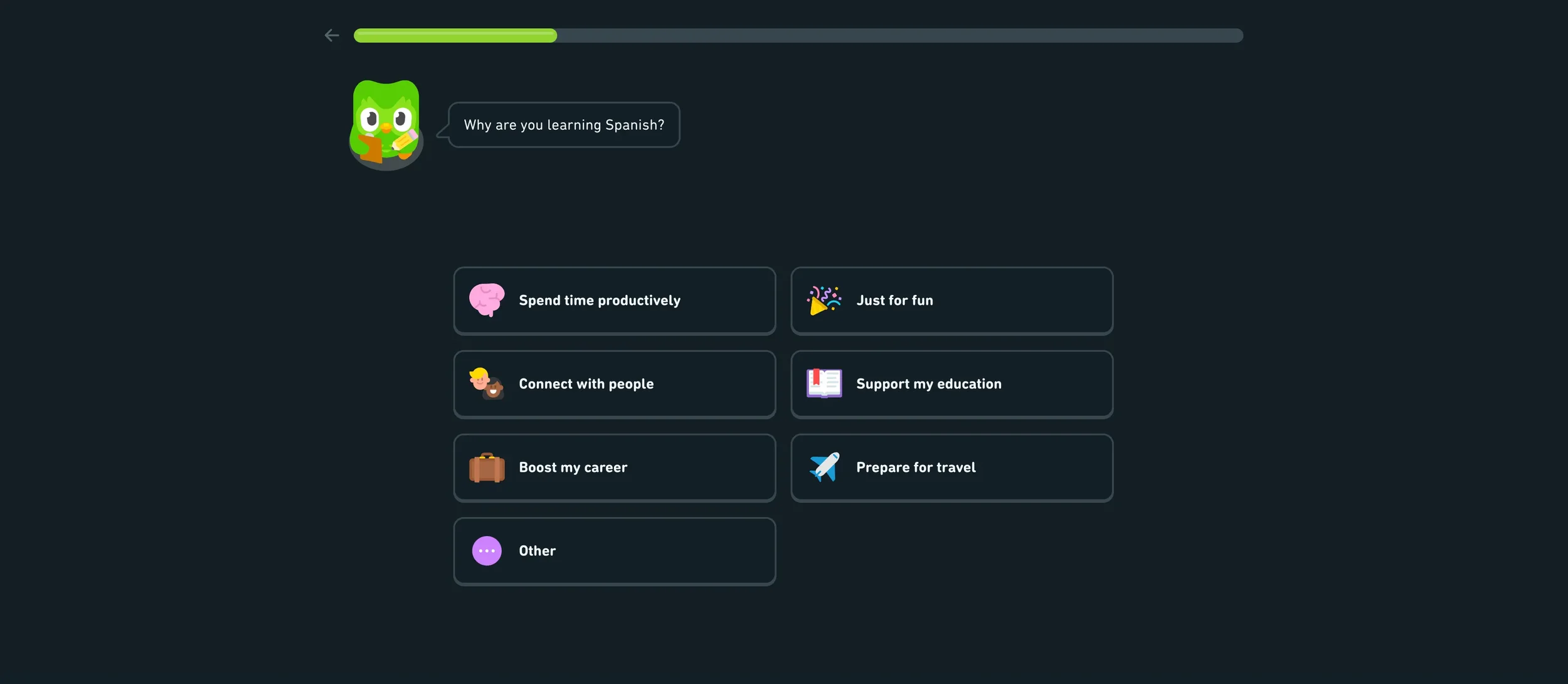REPORT: Digital engagement using Conversational UX
1. Executive Summary
Digital interaction design is at an inflection point. Traditional web forms and static content are giving way to conversational interfaces that mimic the cadence of human dialogue, one question at a time. This approach reduces cognitive load, improves engagement, and aligns with how people process and remember information.
This report examines the cognitive psychology underpinning conversational UX, the evolution of interfaces from paper forms to chat-driven interactions, case studies like Lemonade (US) and Naked (South Africa), regional market trends in the US, UK/EU, and South Africa, and strategic implications for brands seeking to differentiate.
2. Cognitive Psychology Foundations
2.1 Cognitive Load Theory
Human working memory is inherently limited. Cognitive Load Theory (Sweller, 1988) identifies three types of load:
Intrinsic load → the inherent complexity of the material.
Extraneous load → the unnecessary burden imposed by poor design.
Germane load → the effort devoted to processing and understanding.
Conversational UX reduces extraneous load by sequencing interactions, making them manageable and intuitive.
Source: Sweller, J. (1988). Cognitive load during problem solving: Effects on learning. Cognitive Science.
2.2 The “Magic Number” in Memory
George Miller’s famous 1956 paper proposed that humans can hold about 7 ± 2 items in working memory. Later research suggests the true range is closer to 3–5 chunks. Presenting users with 20 form fields simultaneously exceeds these limits, leading to overwhelm and drop-off.
Implication: By presenting one question at a time, systems respect cognitive capacity and encourage steady progress.
Sources:
Miller, G. A. (1956). The Magical Number Seven, Plus or Minus Two. Psychological Review.
Cowan, N. (2001). The magical number 4 in short-term memory. Behavioral and Brain Sciences.
2.3 Chunking & Sequential Processing
Chunking groups information into digestible units. Conversational interfaces inherently “chunk” inputs — a single step framed as a natural exchange. This mirrors how humans absorb stories and conversations.
Example: Podcasts succeed not simply because of length, but because they present one idea at a time in a structured conversational flow.
2.4 Microtasks & Microproductivity
Research shows breaking tasks into smaller steps improves completion and reduces procrastination:
Microtasking enhances focus: Breaking work into microsteps boosts productivity and efficiency (Medium, 2023).
Microproductivity reduces procrastination: Tiny, actionable steps make intimidating tasks doable (Atlassian, Melissa Gratias, PhD).
Neuroscience of small steps: Completing microtasks acts like a “mental GPS,” guiding users forward and reducing anxiety (Stanford research via Ahead App, 2025).
Resumption ease: Programmers resume faster after interruptions when workflows are split into microtasks (George Mason University study).
2.5 Split Attention & Worked Example Effects
Split-Attention Effect: Forcing users to reconcile multiple inputs at once (e.g., reading instructions while completing a long form) creates friction. Sequential questioning eliminates this.
Worked-Example Effect: Step-by-step guidance eases early learning and builds confidence, exactly what a conversational flow provides.
3. Historical Evolution of Conversational UX
3.1 Paper Forms → Digital Forms
Early web: simply digitized long paper forms (e.g., insurance, banking).
User burden: dozens of fields in one screen.
3.2 Wizards & Step-By-Step Flows (1990s–2000s)
Introduced progressive disclosure: multiple steps, each with several questions.
Improvement, but still felt like “work.”
3.3 USSD & Early Mobile Menus (2000s)
USSD (Unstructured Supplementary Service Data) in emerging markets enabled simple, step-based interactions on feature phones.
Example: balance checks, mobile money, and prepaid recharges via short menus.
Psychological parallel: USSD provided structured, sequential micro-choices.
3.4 Early Chatbots (2010s)
Messenger bots, customer service flows.
Often rigid, frustrating when users strayed outside preprogrammed paths.
3.5 LLMs & Modern Conversational AI (2020s)
GPT-powered systems allow natural, flexible, human-like exchanges.
One-question-at-a-time engagement feels effortless compared to overwhelming dumps of information.
4. Case Studies
4.1 Lemonade (US Insurance)
Approach: Conversational application with “Maya,” their AI-powered chatbot guiding users through quoting, underwriting, and claims.
Impact: Users report higher satisfaction due to friendliness + speed. Maya handles claims in as little as three minutes, creating a viral trust factor.
UX Lesson: Complex onboarding broken into conversational steps reduced dropout, improved transparency, and built a disruptive brand narrative.
Sources: Lemonade Blog, “The Secret Behind Lemonade’s Instant Insurance” (2017); Forbes (2019), How Lemonade Is Using AI To Disrupt Insurance.
Lemonade - Conversational UX
4.2 Naked Insurance (South Africa)
Approach: Chat-driven onboarding process for a historically tedious industry. Naked integrates AI chat to help customers quote, bind, and manage policies directly from mobile devices.
Impact: Increased completion rates, improved brand perception, and cultural fit in a mobile-first market. Customers value the simplicity and transparency of pay-as-you-need cover via chat.
UX Lesson: Reframing a boring, high-friction product category into a conversational, easy-to-consume journey proved a competitive differentiator.
Sources: Naked Insurance Blog (2021); TechCentral (2022), How Naked is Reinventing Insurance in South Africa.
Naked.Insurance - Conversational UX
4.3 Duolingo (Global Education)
Approach: Language learning through chatbot-style practice sessions where learners engage in simulated conversations with virtual characters.
Impact: Makes learning feel like conversation, boosting retention and fun. Users are more engaged because practice feels authentic, not mechanical.
UX Lesson: Conversational flows simulate real-life dialogue, giving learners confidence to apply skills outside the app.
Sources: Duolingo Blog (2017), Chatbots: Practice Conversations in French, Spanish, and German; EdSurge (2019), Why Duolingo’s Bots Changed Language Learning.
Duolingo - Conversational UX
4.4 Capital One “Eno” (US Finance)
Approach: Conversational banking assistant available 24/7 via SMS, app, and desktop. Eno helps customers check balances, track spending, monitor fraud, and even create virtual card numbers.
Impact: Replaced clunky banking forms with instant, natural language responses. Eno sends proactive alerts to prevent fraud and helps customers act quickly.
UX Lesson: Conversational design in finance can simplify complex interactions, reduce friction, and build trust in a highly regulated industry.
Sources: Capital One Press Release (2017); American Banker (2019), How Capital One’s Eno AI Assistant Is Changing Customer Service.
Capital One ‘Eno’ - Conversational UX
4.5 Breitling (Luxury Retail)
Approach: Luxury watch concierge chatbot replacing premium inquiry forms. Customers interact with a conversational assistant for product discovery, service booking, and lead capture.
Impact: Mimics boutique service online, reducing friction and enhancing premium brand positioning. The conversational assistant creates a personalized buying journey for high-value items.
UX Lesson: Even luxury retail can benefit from conversational UX, reframing static forms as a dialogue that reinforces exclusivity and service quality.
Sources: Warmly AI (2025), 25 Chatbot Examples; Luxury Daily (2023), How Breitling Uses Chatbots to Enhance Customer Experience.
4.6 Conversational Surveys (Research)
Approach: Chat-style surveys replace traditional questionnaires. Respondents answer in a natural conversational flow instead of facing a wall of questions.
Impact: Higher engagement, better quality responses, lower drop-off. Participants report surveys feel more human and less laborious.
UX Lesson: Even in data-heavy contexts, one-question-at-a-time conversational design boosts both completion rates and response quality.
Sources: arXiv (2020), Chatbot vs. Web Form Surveys; ResearchGate (2021), User Acceptance of Conversational Survey Interfaces.
5. Regional Market Insights
5.1 United States
Adoption accelerating in finance, insurance, and e-commerce.
62% of US consumers prefer digital self-service for routine tasks (Accenture, 2023).
Strong cultural fit with efficiency-driven behaviors.
5.2 United Kingdom & EU
GDPR and data privacy strongly shape chatbot deployment.
EU startups emphasizing trustworthy AI for banking and healthcare.
UK NHS piloting chatbot-driven symptom checkers.
5.3 South Africa
Mobile-first behaviors make conversational UX attractive.
Naked.co.za shows cultural appetite for chat-based onboarding.
Legacy USSD experience normalized sequential step-based interactions.
6. Current Trends & Data
Gartner (2024): By 2026, 75% of customer service interactions will involve conversational AI.
Salesforce (2023): 66% of consumers expect companies to understand needs without repetition.
PwC (2023): 59% of financial services executives prioritize conversational AI investment.
7. Strategic Implications
Reduce Drop-Offs: Sequential UX combats procrastination and abandonment.
Boost Engagement: Aligns with daily chat habits (WhatsApp, iMessage, Slack).
Cross-Channel Adaptability: Works on web, app, voice, and even SMS.
Voice Integration: As accuracy improves (e.g., GPT voice), users expect optional voice-to-text.
Accessibility & Inclusion: One-question interfaces lower barriers for non-native speakers, neurodiverse users, and those with limited digital literacy.
Producer Benefits: Funnel-to-tunnel shift simplifies journey design, making flows cleaner, modular, and easier to optimize.
8. Future Directions
Hybrid Inputs: Combining free-text with guided options.
Voice-First Interfaces: Optional speech-based UX for accessibility and speed.
Multimodal UX: Conversational flow paired with images, diagrams, or widgets.
Website-as-Chat: Static websites evolve into interactive conversational apps.
Personalized Journeys: AI tailoring flows to context, preferences, and history.
9. Recommendations
Organizations looking to modernize digital engagement should begin by adopting conversational UX. This means reframing onboarding, lead capture, and support not as static forms but as natural dialogues.
Teams should leverage psychology in their design decisions, recognizing limits in memory, the benefits of microtasks, and the principles of cognitive load management.
To build confidence internally and externally, companies should highlight cross-industry proof points such as Lemonade, Naked, Duolingo, Breitling, and Capital One, showing how leading organizations are already winning with conversational design.
As conversational interfaces evolve, brands should experiment with voice integration by offering optional voice-to-text or voice-to-voice experiences, ensuring accessibility and inclusivity.
Designers and product owners should recognize the producer benefits of conversational UX: shifting from funnel to tunnel makes journey design simpler, cleaner, and easier to measure.
Finally, forward-looking organizations should position themselves as thought leaders by publishing insights that link psychology, UX, and AI, thereby shaping the industry conversation.
10. Action Points
Audit Current Journeys: Identify where users face friction from long forms or overloaded interfaces.
Select Pilot Flow: Choose one high-value process (e.g., onboarding, lead capture, survey) to redesign using conversational UX.
Prototype Conversational Flow: Map the journey as a dialogue, focusing on one-question-at-a-time steps.
Test With Users: Run A/B testing against existing flows to measure drop-off, completion, and satisfaction.
Iterate With Data: Refine the flow based on analytics and qualitative feedback.
Expand Gradually: Roll out conversational UX to additional processes across web, app, and support channels.
Train Teams: Upskill design and product staff in conversational design principles and tools.
Plan for Voice: Begin experimenting with optional voice input to future-proof accessibility.
Communicate Change: Share learnings internally and externally to establish credibility and thought leadership.
11. References
Sweller, J. (1988). Cognitive load during problem solving. Cognitive Science. https://psycnet.apa.org/record/1989-10664-001
Miller, G. A. (1956). The Magical Number Seven, Plus or Minus Two. Psychological Review. https://psychclassics.yorku.ca/Miller/
Cowan, N. (2001). The magical number 4 in short-term memory. Behavioral and Brain Sciences. https://doi.org/10.1017/S0140525X01003922
Accenture (2023). Technology Vision Report. https://www.accenture.com/us-en/insights/technology/technology-trends-2023
Gartner (2024). Conversational AI Forecast. https://www.gartner.com/en/newsroom/press-releases/2024-02-12-gartner-says-75--of-customer-service-interactions-will-be-powered-by-conversational-ai-by-2026
Salesforce (2023). State of the Connected Customer. https://www.salesforce.com/resources/research-reports/state-of-the-connected-customer/
PwC (2023). Financial Services Insights. https://www.pwc.com/gx/en/industries/financial-services/publications/financial-services-insights.html
Lemonade Blog (2017). The Secret Behind Lemonade’s Instant Insurance. https://www.lemonade.com/blog/secret-behind-instant-insurance/
Forbes (2019). How Lemonade Is Using AI To Disrupt Insurance. https://www.forbes.com/sites/forbestechcouncil/2019/02/13/how-lemonade-is-using-ai-to-disrupt-insurance/
Naked Insurance Blog (2021). https://www.naked.insure/blog
TechCentral (2022). How Naked is Reinventing Insurance in South Africa. https://techcentral.co.za/how-naked-is-reinventing-insurance-in-south-africa/212010/
Duolingo Blog (2017). Chatbots: Practice Conversations in French, Spanish, and German. https://blog.duolingo.com/chatbots/
EdSurge (2019). Why Duolingo’s Bots Changed Language Learning. https://www.edsurge.com/news/2019-02-19-why-duolingo-s-bots-changed-language-learning
Capital One Press Release (2017). https://press.capitalone.com/phoenix.zhtml?c=251626&p=irol-newsArticle&ID=2265113
American Banker (2019). How Capital One’s Eno AI Assistant Is Changing Customer Service. https://www.americanbanker.com/news/how-capital-ones-eno-ai-assistant-is-changing-customer-service
Warmly AI (2025). 25 Chatbot Examples. https://www.warmly.ai/p/blog/examples-of-sales-chatbots
Luxury Daily (2023). How Breitling Uses Chatbots to Enhance Customer Experience. https://www.luxurydaily.com/how-breitling-uses-chatbots-to-enhance-customer-experience/
Atlassian (2023). Microproductivity: Breaking Tasks into Smaller Steps. https://www.atlassian.com/blog/productivity/microproductivity-break-tasks-into-smaller-steps
Ahead App (2025). The Science of Microtasks. https://ahead-app.com/blog/procrastination/the-science-of-micro-tasks-why-small-steps-lead-to-big-achievements-20250106-204943
George Mason University (2019). Impact of Microtasking on Programmers. https://cs.gmu.edu/~tlatoza/papers/ImpactOfMicrotasking.pdf
arXiv (2020). Chatbot vs. Web Form Surveys. https://arxiv.org/abs/2003.02537
ResearchGate (2021). User Acceptance of Conversational Survey Interfaces. https://www.researchgate.net/publication/350124510_User_Acceptance_of_Conversational_Survey_Interfaces




